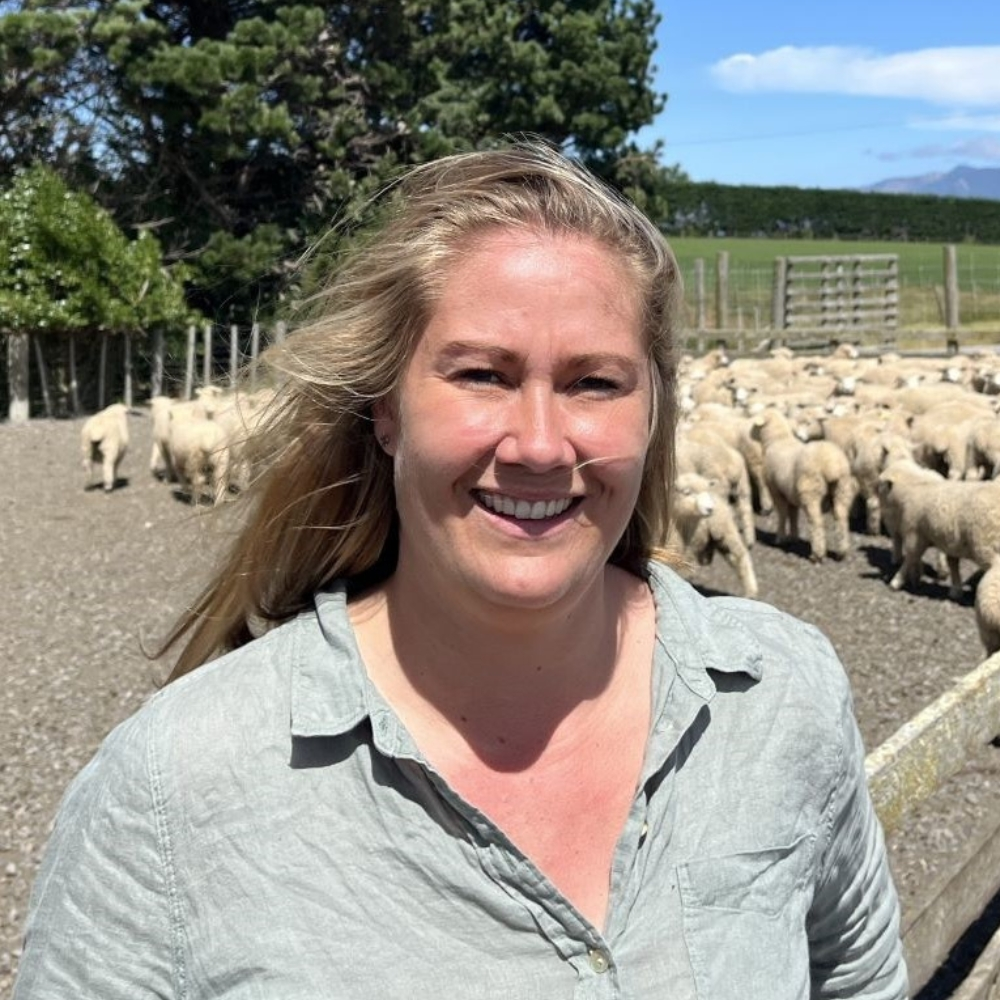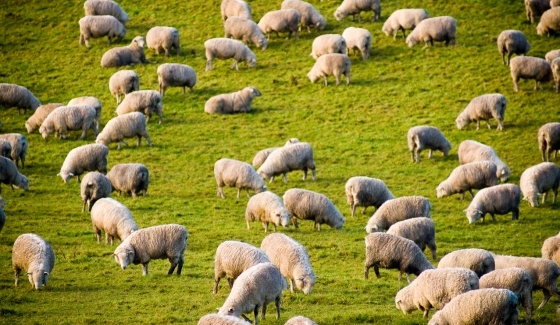
With the rise of triple drench resistance on New Zealand sheep farms, there is an increasing need from commercial farmers to buy rams that are genetically superior for resistance or resilience to a worm burden. It is predicted that there is more drench resistance present than what is reported and farmers are encouraged to monitor their drench status so that they can identify an issue before it turns into a major problem. On the breeding front, buying rams with the genetics to be worm-resilient and/or resistant is a useful tool to help reduce your reliance on drenches.
What is the difference between worm resistance and resilience?
Firstly, let's touch on the difference between resistance and resilience. Both result in a lower need for drenching, but in different ways.
What makes a sheep worm-resistant?
Resistance is when a sheep has a higher level of immunity to infective larvae, stopping the lifecycle of the parasite, and passing fewer eggs in their faeces. Breeding for resistance selects animals that have higher immunity and lower egg outputs. Immunity develops over time, and lambs that have a higher immunity later in the season are also highly likely to be the ones that start showing signs of immunity sooner. Higher immunity animals require less drench, as their own immune systems are able to reduce the parasite burden. This reduction in parasite burden and fewer eggs passing in the faeces means there is also less pasture contamination.
The pros and cons of worm resilience
Resilience refers to sheep that are able to maintain their production levels regardless of parasite burden. Resilient animals may have a large parasite burden while showing minimal signs of ill-thrift. They are able to build up higher levels of worm burden before needing drenching, increasing drench intervals, and also requiring less drench. However, these animals will still be shedding large amounts of parasite onto the pasture for other lambs to consume. If other lambs in the population are susceptible to a worm burden, they may be more negatively affected by the contaminated pastures left behind by the resilient lambs.
How to measure worm resistance and resilience
Stud breeders are able to test and measure for resistance and resilience in a variety of ways. Testing for resistance can be done using faecal egg counts (FECs) or a measure of immunity via carbohydrate larval antigen (CarLA) in the sheep’s saliva. Resilience is measured with a combination of recording the age at first drench, and the liveweight gain during this period.
FEC testing
FEC testing requires a faecal sample from individual lambs (usually 20-30 per sire) to be taken once mob averages have been allowed to build up to around 800 eggs per gram of faeces (epg). To ensure all lambs have a fair starting point, they should all be drenched once, then left to build up parasite burdens.
It is assumed that lambs within the mob will be exposed to the same parasite levels. However, due to differences in grazing behaviours and paddock contamination, this may not be the case. This is why testing sire groups is important. Further, lambs are often drenched again at the point of sampling, which can create a new starting point for a second FEC test. Doing a second test after the lambs have had another burden build up can increase the accuracy of the sire results.
There are some limitations to measuring immunity to worms with FECs, including differences in final egg counts due to differences in faecal composition, multiple species, differing parasite fertility levels, differing egg output depending on the sex of the worm ingested, and the difficulty differentiating egg species. Samples may be difficult to collect if animals have recently defecated. At the farm level, the biggest limitation is allowing the lambs to build a sufficient worm burden without intervening with a drench. In some areas that are prone to haemonchus contortus (barber’s pole worm), this may not be feasible when considering the welfare of the lambs, and anthelmintic intervention may be necessary, preventing the ability to carry out a FEC test.
CarLA and sheep immunity
CarLA is a measure of a sheep’s natural immunity response to ingesting infective L3 larvae. The immune system produces anti-CarLA salivary IgA in response to being infected, which is measurable in the saliva. Testing is done when the lambs have been exposed to high levels of parasites and have been allowed time to build up an immune response. Testing should be done when around 70-80% of the population has some level of response (ie when there is a good level of variation in the population). Again, because there can be variation in larval challenge between lambs within a mob, ideally about 20 lambs per sire group are tested.
The biggest limitation with testing for CarLA is that it is measuring an immune response, without any measure of the larvae entering the body or the number of eggs being produced at the other end (measured by FECs). However, the benefits of the saliva test for CarLA are that samples are easily obtained for every animal, and are less invasive to collect. At the farm level, the largest benefit is being able to intervene with anthelmintics as required, without affecting the immune response development.
Measuring worm resilience
Resilience is a measure of how long a lamb can go without requiring drenching while still maintaining growth. Often farmers will weigh each animal at the point of planned drenching, and only drench the animals with a pre-determined ‘low’ growth rate, or any that look like they particularly need it. Drenched lambs are recorded, along with growth rates for all lambs in the mob. This process is usually looking at all lambs within the mob/population.
Only the time until the first drench and growth within that period are measured, not the output of eggs. This can mean that there are high levels of contamination on the pasture, which can be an issue if there is a large variation in resilience within the population.
Testing requirements for measuring worm resistance and resilience
- Testing for both resistance and resilience requires the lambs to be run in the same mob, with the same assumed levels of exposure to infective larvae.
- None of the testing methods measures parasite intakes, and assume that all lambs are getting the same exposures and that the variation in their responses is mostly down to genetics. This is why we use sire groups when doing these measures, giving an average from a number of progeny. This gives a greater accuracy to the breeding values that are generated for any of the traits measured.
- Testing needs to be done when the animal is young (ie before they have been through their first winter), as older animals tend to have higher levels of immunity, and there is less variation in the numbers.
- Both FEC and CarLA require a high level of infection before testing can be done, to show the full variation in the flock.
How does selecting for worm resistance reduce drench usage?
With selection for more worm-resistant sheep, we are looking at two factors that ultimately reduce drench usage:
- how much immunity the animal develops; and
- how soon they develop it.
Higher immunity, developed at a younger age, results in an animal that can better (and sooner) manage a parasite intake without requiring anthelmintic intervention. This results in less drench being used overall on the farm, which has positive implications in the fight against drench resistance. The level of immunity and the onset of immunity development are highly correlated, with animals that develop immunity earlier having higher results later in the season.
Heritabilities and correlations
Now for the sciencey bits. To be able to improve a trait genetically, it must be heritable and have variation in the population. The heritability (how much is down to genetics vs how much is environmentally influenced) indicates how fast progress can be made.
FEC has a moderate heritability at 0.18, or 18%. CarLA has a higher heritability at 0.3, or 30%. Interestingly, selection for increased CarLA response only reduces FECs at half the rate as selecting for FEC directly. Testing for both traits is desirable in the fight against worms; however, this is not always feasible for a lot of farmers. Selecting for animals that have higher resistance to worms has a positive correlation with production traits such as increased growth rate and milk production (actual correlation values vary depending on the method of testing, level of infection, and the specific traits measured).
Resilience to worms has a lower heritability at 0.1, or 10%. This means that progress can be made, but it will be relatively slow.
Genetic selection
There are a handful of breeding values (ASBVs/eBVs) for these traits presented in Sheep Genetics/SIL, which a breeder may make available to you when you are selecting your rams.
Currently, for Sheep Genetics, the only worm-related ASBV is WEC (worm egg count, the equivalent to FEC in New Zealand). This is measured as a percentage, with lower (more negative) values being more desirable.
In New Zealand, SIL lists multiple traits, depending on what was measured, and produces sub-indexes for these traits.
- For FECs, there are two options as lambs and one as an adult (FEC1, FEC2 and AFEC, respectively). Also measured in a percentage (relative to that flock), a lower value is desirable for FEC eBVs.
- CarLA only has one eBV associated with it (CARLA), with higher values indicating greater immunity.
- Resilience has two eBVs associated with it – RGAIN (live weight gain under a challenge) and DRAGE (age when an animal is drenched to overcome the effects of a challenge on growth). For both of these eBVs, higher values are more desirable.
In SIL, these eBVs are used to generate the sub-indexes DPF (dual purpose FEC), DPC (dual purpose CARLA), and DPZ (dual purpose resilience). In all instances with indexes and sub-indexes, a more positive value is more desired. For DPF and DPZ, these indexes combine the associated traits into one value. The CARLA sub-index only uses the one CARLA breeding value.
While there is a lot of talk of drench resistance affecting commercial farmers out there, there are both management and genetic solutions available to reduce the problem. For ram breeders, there are multiple testing methods for identifying sheep that are naturally more resistant or resilient to a parasite burden. These traits are heritable and there is variation in the population, so progress can be made.
A flock with a higher level of resistance (or resilience) to worms will require less anthelmintic intervention. Sheep with better resistance have the added benefit of reduced larval contamination of pastures. As a commercial farmer, you can take steps towards reducing the risk of drench resistance by talking to your ram breeder about what they are doing to increase the immunity of their sheep to a worm challenge - and select rams accordingly.
_____
Join the conversation on The Hub
Take a moment to head over to the neXtgen Agri Hub to share your thoughts and questions. We’d love to hear about your approach to managing worms using genetics. What's going well and what are you finding challenging?
_____
References and further reading
CARLA® saliva test (website) - AgResearch
CARLA® saliva test (information sheet) - AgResearch
Selection for improved immunity to roundworm parasites in livestock (CARLA® saliva test) - SIL
Selection to increase resistance of sheep to internal parasites (SIL technical note) - SIL




.jpg)




